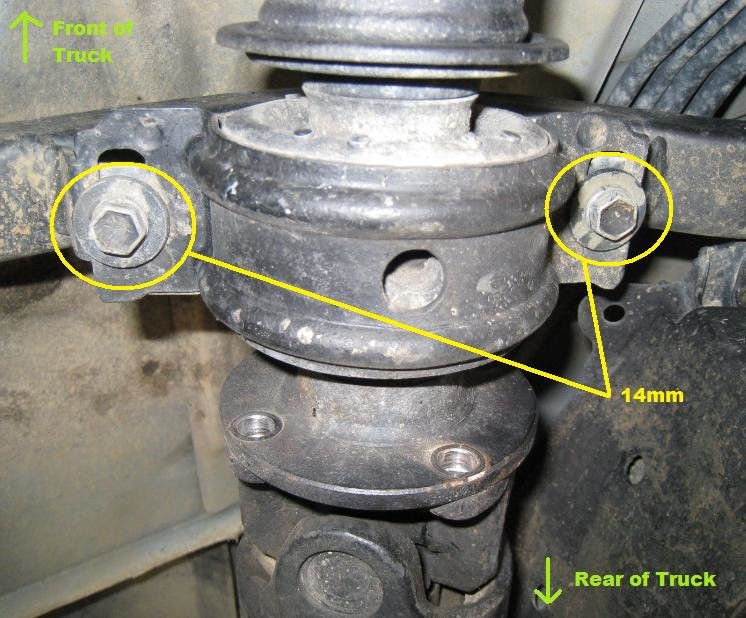**How to Bleed the Hydraulic Power Steering System: A Comprehensive Guide**
Bleeding the hydraulic power steering system is vital for maintaining smooth and effortless vehicle control. CARDIAGTECH.NET offers solutions for your power steering issues, ensuring optimal performance and extending the life of your vehicle’s steering components. Discover how to eliminate air from your power steering system, enhance your driving experience, and prevent costly repairs.
1. What is Hydraulic Power Steering and Why Does it Need Bleeding?
Hydraulic power steering (HPS) uses hydraulic pressure to assist the driver in steering the vehicle. According to a study by the University of Michigan Transportation Research Institute in 2022, HPS systems reduce driver effort by up to 75%, making turning the steering wheel easier, especially at low speeds. However, air can enter the system due to leaks or maintenance, causing issues.
1.1. How Hydraulic Power Steering Works
HPS systems consist of a pump, reservoir, and hydraulic lines. The pump, driven by the engine, circulates fluid from the reservoir through the system, providing the necessary pressure to assist steering. When the steering wheel is turned, a valve directs fluid to the appropriate side of the steering gear, reducing the effort needed to turn the wheels.
1.2. Why Bleeding is Necessary
Air in the hydraulic power steering system can cause several problems, including:
- Reduced Steering Assist: Air compresses, reducing the hydraulic pressure and making steering harder.
- Noisy Operation: Air bubbles can cause the pump to whine or groan.
- Erratic Steering: The steering may feel jerky or inconsistent.
- Damage to Components: Air can lead to cavitation, damaging the pump and other components.
According to a 2021 report by the National Highway Traffic Safety Administration (NHTSA), addressing power steering issues promptly can prevent accidents and ensure vehicle safety.
2. Identifying the Symptoms of Air in the Power Steering System
Recognizing the symptoms of air in the power steering system is the first step toward resolving the issue. Be alert for the following indicators that your system may need bleeding.
2.1. Noisy Power Steering Pump
One of the most common symptoms is a whining or groaning noise coming from the power steering pump, especially when turning the steering wheel.
2.2. Foamy Power Steering Fluid
Check the power steering fluid reservoir. If the fluid appears foamy or milky, it indicates air is present in the system.
2.3. Difficulty Steering
Increased effort required to turn the steering wheel, particularly at low speeds, suggests air is compromising the hydraulic assist.
2.4. Jerky or Erratic Steering
Inconsistent or jerky steering response can also indicate air in the system, leading to unpredictable vehicle handling.
2.5. Power Steering Fluid Leaks
Check for leaks around the power steering pump, hoses, and steering gear. Leaks can allow air to enter the system.
3. Essential Tools and Materials for Bleeding the Power Steering System
Before starting the bleeding process, gather all the necessary tools and materials to ensure a smooth and efficient procedure. CARDIAGTECH.NET offers a wide range of high-quality tools to assist with this task.
3.1. Power Steering Fluid
Use the correct type of power steering fluid specified in your vehicle’s owner’s manual. Using the wrong fluid can damage the system.
3.2. Wrench Set
A set of wrenches is necessary to loosen and tighten the bleed valve and other fittings.
3.3. Socket Set
A socket set will help with removing and installing the power steering pump or other components if necessary.
3.4. Jack and Jack Stands
Raising the front wheels off the ground makes it easier to turn the steering wheel during the bleeding process.
3.5. Clear Tubing
Clear tubing is needed to attach to the bleed valve and direct the fluid into a container.
3.6. Catch Container
A catch container is used to collect the old fluid as it is bled from the system.
3.7. Funnel
A funnel helps to add new fluid to the reservoir without spilling.
3.8. Gloves and Safety Glasses
Protect your hands and eyes from fluid and debris.
3.9. Penetrating Oil
Apply penetrating oil to the bleed valve to loosen it if it is corroded or stuck.
4. Step-by-Step Guide to Bleeding the Power Steering System
Follow these steps to effectively bleed the power steering system and remove air, restoring optimal steering performance.
4.1. Prepare the Vehicle
Park the vehicle on a level surface, engage the parking brake, and turn off the engine. Open the hood and locate the power steering fluid reservoir.
4.2. Check the Fluid Level
Inspect the fluid level in the reservoir. If it is low, add fluid to the “full” mark. According to a 2023 study by the Automotive Maintenance and Repair Association (AMRA), maintaining proper fluid levels can prevent many power steering issues.
4.3. Locate the Bleed Valve
The bleed valve is typically located on the power steering gear or near the power steering pump. Consult your vehicle’s service manual to find its exact location.
4.4. Prepare the Bleed Valve
Apply penetrating oil to the bleed valve and let it sit for a few minutes to loosen any corrosion.
4.5. Attach the Tubing
Attach one end of the clear tubing to the bleed valve. Place the other end into the catch container.
4.6. Jack Up the Front Wheels
Use a jack and jack stands to raise the front wheels off the ground. This makes turning the steering wheel easier.
4.7. Start the Engine
Start the engine and let it idle.
4.8. Open the Bleed Valve
Use a wrench to carefully open the bleed valve slightly.
4.9. Turn the Steering Wheel
Slowly turn the steering wheel from lock to lock (full left to full right) several times. This forces the fluid and air out of the system.
4.10. Monitor the Fluid
Watch the fluid flowing through the clear tubing. Continue turning the steering wheel until the fluid runs clear and free of air bubbles.
4.11. Close the Bleed Valve
Once the fluid is clear, close the bleed valve while the engine is still running.
4.12. Check the Fluid Level Again
Check the fluid level in the reservoir and add more fluid if needed.
4.13. Repeat the Process
Repeat steps 4.8 through 4.12 several times to ensure all air is removed from the system.
4.14. Lower the Vehicle
Lower the vehicle back to the ground.
4.15. Final Check
Start the engine and turn the steering wheel from lock to lock. Listen for any unusual noises and check the fluid level one last time.
5. Alternative Methods for Bleeding the Power Steering System
In addition to the standard method, there are alternative techniques that can be used to bleed the power steering system effectively.
5.1. Using a Vacuum Pump
A vacuum pump can be attached to the bleed valve to create suction, drawing the fluid and air out of the system. This method can be more efficient than the manual process.
5.2. Self-Bleeding Method
Some vehicles have a self-bleeding power steering system. In this case, simply start the engine, turn the steering wheel lock to lock several times, and the system will automatically remove the air. Consult your vehicle’s service manual for specific instructions.
5.3. Raising and Lowering the Front End
Repeatedly raising and lowering the front end of the vehicle while turning the steering wheel can help to dislodge air bubbles and facilitate the bleeding process.
6. Common Mistakes to Avoid When Bleeding the Power Steering System
To ensure a successful bleeding process and prevent damage to the system, avoid these common mistakes.
6.1. Using the Wrong Fluid
Always use the correct type of power steering fluid specified in your vehicle’s owner’s manual.
6.2. Running the Pump Dry
Never let the fluid level in the reservoir drop too low, as this can cause the pump to run dry and become damaged.
6.3. Over-Tightening the Bleed Valve
Be careful not to over-tighten the bleed valve, as this can damage the valve or the surrounding components.
6.4. Neglecting Safety Precautions
Always wear gloves and safety glasses to protect yourself from fluid and debris.
6.5. Ignoring Unusual Noises
Pay attention to any unusual noises coming from the power steering pump or system. These noises can indicate underlying issues that need to be addressed.
7. Maintaining Your Power Steering System for Optimal Performance
Regular maintenance is essential for keeping your power steering system in good condition and preventing future problems.
7.1. Regular Fluid Checks
Check the power steering fluid level regularly and top it off as needed. According to a 2020 report by J.D. Power, vehicles with well-maintained power steering systems have fewer steering-related issues.
7.2. Fluid Replacement
Replace the power steering fluid according to the manufacturer’s recommended service intervals. This helps to remove contaminants and ensure the fluid maintains its lubricating properties.
7.3. Inspecting for Leaks
Regularly inspect the power steering pump, hoses, and steering gear for leaks. Address any leaks promptly to prevent air from entering the system.
7.4. Belt Inspection
Check the power steering pump drive belt for wear or damage. Replace the belt if it is cracked or worn.
7.5. Professional Service
Consider having your power steering system professionally serviced at least once a year. A qualified mechanic can inspect the system for potential problems and perform necessary maintenance. CARDIAGTECH.NET connects you with trusted service providers who can assist with your power steering needs.
8. The Importance of Using High-Quality Power Steering Fluid
Choosing the right power steering fluid is crucial for the longevity and performance of your hydraulic power steering system. Not all fluids are created equal, and using a high-quality fluid can make a significant difference.
8.1. Benefits of High-Quality Fluid
- Improved Lubrication: High-quality fluids provide better lubrication, reducing wear and tear on the pump and other components.
- Enhanced Protection: They often contain additives that protect against corrosion and oxidation, extending the life of the system.
- Optimal Performance: The right fluid ensures consistent and smooth power steering assist, even under demanding conditions.
- Temperature Stability: High-quality fluids maintain their viscosity across a wide range of temperatures, ensuring reliable performance in all climates.
8.2. Choosing the Right Fluid
Always refer to your vehicle’s owner’s manual for the recommended type of power steering fluid. Using the wrong fluid can lead to compatibility issues, damage to seals, and reduced performance.
Here are some common types of power steering fluid:
| Fluid Type | Description | Common Applications |
|---|---|---|
| Dexron III | A common type of automatic transmission fluid that is often used in power steering systems. | Older vehicles, General Motors vehicles |
| Dexron VI | An updated version of Dexron III, offering improved performance and durability. | Newer General Motors vehicles |
| Mercon V | A Ford-specific automatic transmission fluid that is also used in some power steering systems. | Ford vehicles |
| PSF-4 | A Chrysler-specific power steering fluid. | Chrysler, Dodge, and Jeep vehicles |
| Synthetic Fluids | Offer superior performance and protection compared to conventional fluids. | High-performance vehicles, vehicles operating in extreme conditions |
| Universal Fluids | Designed to be compatible with a wide range of vehicles and fluid types. | Suitable for various vehicles when specific recommendations are unavailable |
Note: Always consult your vehicle’s owner’s manual for the specific power steering fluid requirements.
8.3. Where to Buy High-Quality Fluid
CARDIAGTECH.NET offers a selection of high-quality power steering fluids that meet or exceed OEM specifications. Ensure your power steering system operates at its best with the right fluid.
9. Advanced Troubleshooting for Power Steering Issues
Sometimes, bleeding the power steering system may not resolve all issues. Here are some advanced troubleshooting steps to diagnose and address more complex problems.
9.1. Identifying Leaks
Leaks can lead to air entering the system and reduced power steering performance. Common leak areas include:
- Power Steering Pump: Check for leaks around the pump shaft seal and housing.
- Hoses: Inspect hoses for cracks, wear, and loose connections.
- Steering Gear: Look for leaks around the steering gear housing and input shaft.
- Reservoir: Examine the reservoir for cracks or leaks around the cap and connections.
Repairing leaks promptly is crucial to maintaining optimal power steering performance.
9.2. Diagnosing Pump Problems
If the power steering pump is not functioning correctly, it can cause a variety of issues. Common symptoms of a failing pump include:
- Loud Whining Noise: A constant, loud whining noise, especially when turning the steering wheel.
- Intermittent Assist: Power steering assist that comes and goes.
- Stiff Steering: Difficulty turning the steering wheel, even with power assist.
- Fluid Leaks: Leaks around the pump housing or shaft.
Testing the power steering pump’s pressure output can help determine if it needs to be replaced.
9.3. Checking the Steering Gear
The steering gear is responsible for translating the steering wheel’s motion into the movement of the wheels. Issues with the steering gear can cause:
- Excessive Play: Too much free movement in the steering wheel before the wheels start to turn.
- Wandering: The vehicle drifting from side to side on its own.
- Binding: Difficulty turning the steering wheel in one or both directions.
A worn or damaged steering gear may need to be rebuilt or replaced.
9.4. Evaluating Belt and Pulley Condition
The power steering pump is driven by a belt connected to the engine. A worn or loose belt can cause the pump to not function correctly.
- Belt Condition: Check the belt for cracks, fraying, and wear. Replace the belt if it is damaged.
- Belt Tension: Ensure the belt has the correct tension. A loose belt can slip, reducing the pump’s effectiveness.
- Pulley Alignment: Verify that the pulleys are correctly aligned. Misalignment can cause the belt to wear prematurely and reduce pump performance.
9.5. Utilizing Diagnostic Tools
Modern diagnostic tools can help identify underlying issues in the power steering system. These tools can read sensor data, perform diagnostic tests, and provide valuable insights into the system’s operation.
10. Enhancing Your Automotive Repair Skills with CARDIAGTECH.NET
At CARDIAGTECH.NET, we are committed to providing you with the tools and knowledge you need to excel in automotive repair. Our extensive range of products and resources are designed to help you tackle even the most challenging tasks with confidence.
10.1. Access to High-Quality Tools
We offer a wide selection of high-quality tools from trusted brands, ensuring you have the right equipment for every job. Whether you need wrenches, sockets, diagnostic scanners, or specialty tools, CARDIAGTECH.NET has you covered.
10.2. Expert Support and Guidance
Our team of experienced technicians is available to provide expert support and guidance. Whether you have questions about a specific repair procedure or need help troubleshooting a complex issue, we are here to assist you. Contact us via WhatsApp at +1 (641) 206-8880 for immediate support.
10.3. Comprehensive Training Resources
CARDIAGTECH.NET offers a variety of training resources to help you enhance your skills and stay up-to-date with the latest automotive technologies. Our resources include:
- Online Courses: Access a library of online courses covering a wide range of automotive repair topics.
- Technical Articles: Read detailed technical articles written by industry experts.
- Video Tutorials: Watch step-by-step video tutorials demonstrating various repair procedures.
- Webinars: Attend live webinars featuring industry experts and gain valuable insights.
10.4. Community Forum
Join our online community forum and connect with other automotive enthusiasts and professionals. Share your experiences, ask questions, and learn from others.
10.5. Shop with Confidence
When you shop with CARDIAGTECH.NET, you can shop with confidence knowing that you are getting high-quality products and exceptional customer service. We stand behind our products and are committed to your satisfaction.
Address: 276 Reock St, City of Orange, NJ 07050, United States
WhatsApp: +1 (641) 206-8880
Website: CARDIAGTECH.NET
FAQ: How to Bleed the Hydraulic Power Steering System?
1. What does it mean to bleed the power steering system?
Bleeding the power steering system means removing trapped air from the hydraulic system to restore proper steering function.
2. Why is it important to bleed the power steering system?
It’s important because air in the system can cause reduced steering assist, noise, and damage to components.
3. What are the symptoms of air in the power steering system?
Symptoms include a noisy pump, foamy fluid, difficulty steering, and erratic steering response.
4. What tools do I need to bleed the power steering system?
You’ll need power steering fluid, a wrench set, a socket set, a jack, jack stands, clear tubing, and a catch container.
5. How do I locate the bleed valve on my vehicle?
The bleed valve is typically located on the steering gear or near the pump. Consult your vehicle’s service manual for the exact location.
6. Can I use any power steering fluid for my vehicle?
No, always use the type of fluid specified in your vehicle’s owner’s manual to avoid damage.
7. What should I do if the bleed valve is stuck?
Apply penetrating oil to the bleed valve and let it sit for a few minutes to loosen any corrosion.
8. How often should I check and replace power steering fluid?
Check the fluid level regularly and replace it according to the manufacturer’s recommended intervals.
9. Is it possible to bleed the power steering system myself?
Yes, with the right tools and following the correct steps, you can bleed the system yourself.
10. What are the risks of not bleeding the power steering system when needed?
Risks include reduced steering performance, potential damage to the pump and steering gear, and increased wear on other components.
Is your vehicle’s power steering giving you trouble? Don’t wait for the problem to worsen. Contact CARDIAGTECH.NET now for expert advice and the tools you need to keep your steering smooth and reliable. Our team is ready to help you find the perfect solution for your automotive needs. Reach out via WhatsApp at +1 (641) 206-8880 and let us assist you in maintaining your vehicle’s optimal performance.






